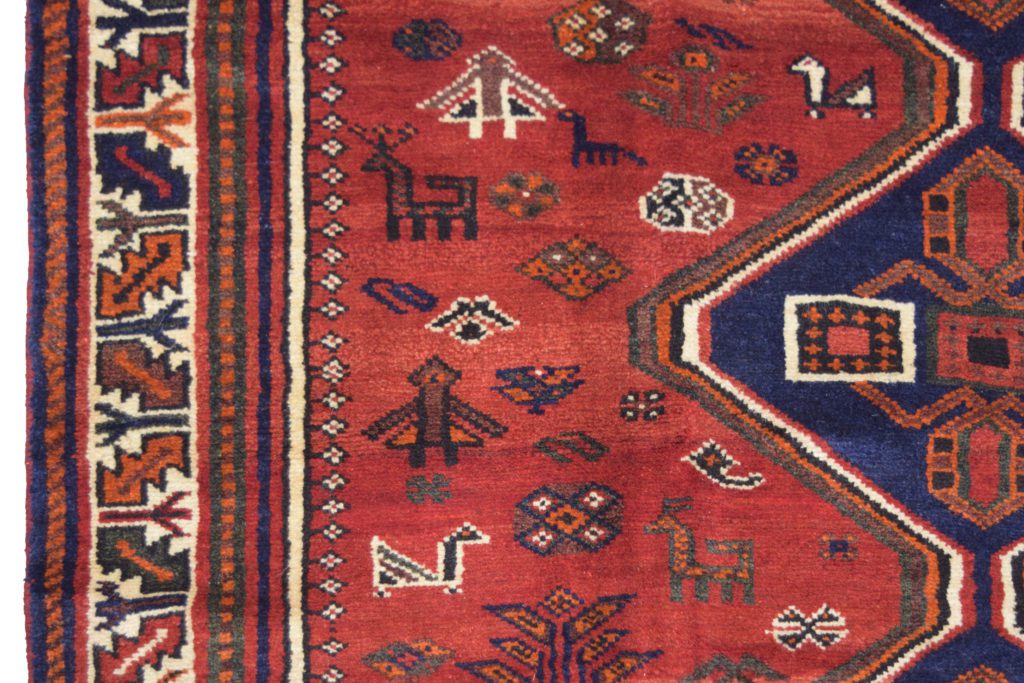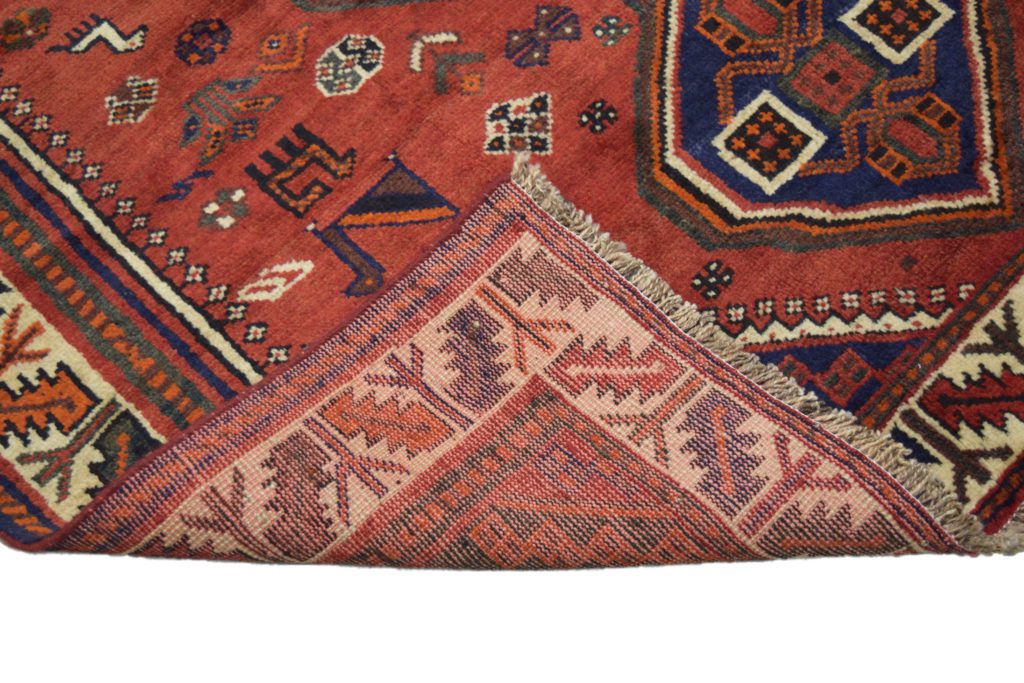Staff Pick – Vintage & Traditional Ghashghai Carpet
Surrounded by thousands of carpets of varying provenance, we sometimes take for granted the captivating intrigue of tribal rugs. Here at Orley Shabahang, we learn through experience that the more time we spend with these unique rugs, the more we fall in love with them. While tribal carpets tend to be more rustic and playful in design, they are cherished both for the stories they tell and the profound quality of their craftsmanship, characterized by lush piles and virtually indestructible foundations. This week’s Staff Pick” features our vintage Ghashghai carpet from the Orley Shabahang World Market Collection. Continue reading to learn more about its construction, cultural significance, and why we love this Ghashghai and other vintage pieces alike.
The Ghashghai tribe, sometimes spelled Qashqai or Kashquai, originates from the Southwestern region of Iran. This area of Iran is home to several tribes that are more commonly known for their various carpets, such as the Bakhtiari, Semnan, Shalamzar, Kurd, and Yalameh tribes. Like many of their neighbors, the Ghashghai tribe were historically a nomadic people., The rugs they produced fall into a category of Persian village-style carpets, which are hand-knotted using pure wool and designed according to the imagination and artistic vision of the weaver. Ghashghai carpets also share a distinguished color palette of indigo, green, orange, brown, red, and cream wool. However, these tones may not always be present within every Ghashghai piece, and the combination of different hues depends on two reasons. The weavers who crafted this carpet utilized multiple Persian weaving techniques, handed down from generation to generation. For example, the wool is all-natural, derived from Persian fat-tail sheep, and hand-spun to maintain its asymmetric structure. After spinning the yarn, organic vegetable dyes such as madder root, pomegranate rinds, and indigo, preferred for their bright and fade-resistant tones, implemented obtain the varying red, brown, blue, green, and orange hues. The yarn is then washed in natural river water to remove excess dyes. Afterward, it is then left to dry and bake in the sun. The drying process slightly fades the wool and thus reduces overall fading after the construction of the pile is complete.
Because Ghashghai designs are influenced by imagination and creativity, the motifs within the design hold cultural significance and symbolism. Typically showcasing a Persian garden design, the medallion or medallions adorning the center of the carpet represent the interior water fixture or hōz in Farsi. The medallion motifs in this carpet are identified as crabs and symbolize invincible knowledge. Further outwards, peacocks and other bird motifs are located in the field and represent peace and divine protection. Furthermore, canine-like motifs, conveniently located near human figures, are detailed in blue and brown and symbolize protection. Finally, an assortment of flowers found throughout the field symbolizes prosperity, wisdom, and happiness.
We love these vintage Ghashghai pieces and highly recommend them for first-time hand-knotted carpet buyers. We adore their vintage look, legendary durability, and their affordable price point. Crafted in the 1940s, this 5’3” x 7’1” Ghashghai carpet features an irresistible vintage aesthetic. The harmonious striation within the pile further aids its ability to match and blend with numerous styles of decor and interiors.
Ghashghai carpets, woven both for trade and personal use, were created to be used daily and to stand up to the harsher climates of the mountains and deserts in Iran. The wool utilized has naturally high lanolin levels, protecting the pile and allowing it to clean superbly, as well as stand up to the test of time. Finally, we love showing customers vintage Ghashghai carpets like this one because of their price point. Tribal Ghashghai carpets like our example are very affordable, especially given their high quality and aesthetic appeal. Moreover, Ghashghai carpets also come in an array of standard sizes, typically measuring anywhere from 2′ x 3′ to 6′ x 9′.
If you are in the market for the perfect tribal rug and enjoyed this vintage Ghashghai example, check out the Orley Shabahang 1stDibs Digital Showroom to view Ghashghai rugs in multiple sizes and colorways. And if you still want more, stop into any of our conveniently located Milwaukee locations to see additional tribal carpeting options.





